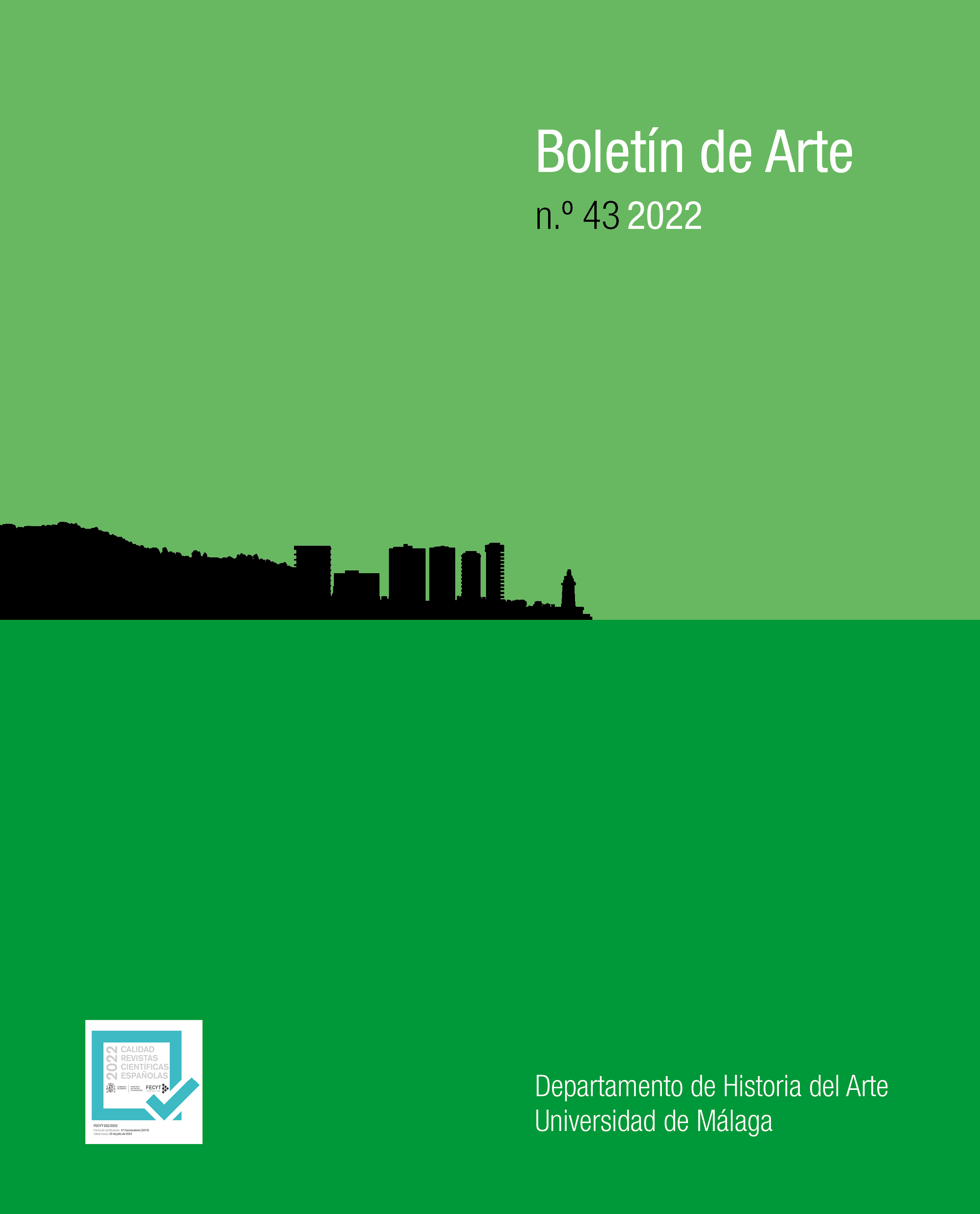Existential Space and Architecture. About the Spatial Perception in the Cinema of Ingmar Bergman
DOI:
https://doi.org/10.24310/BoLArte.2022.vi43.12024Keywords:
Existential space, Christian Norberg-Schulz, Ingmar Bergman, Character, Architecture, Images, PersonaAbstract
A critical approach to Ingmar Bergman’s cinematographic work can be made from the idea of «existential space», as developed by the Norwegian architect and theorist Christian Norberg-Schulz. The successive levels of perception of space (landscape-city-home), and the constitutive elements of existential space (center-paths-zones), together with the formal concretion approved by architecture in the definition of the cinematographic image, are present in Bergman’s work even to the point of being part of the origin of his plots. In films like as Cries and Whispers (1971), The Seventh Seal (1956), Wild Strawberries (1957), Fanny and Alexander (1982) and, especially, in Persona (1965), narrative resources based on the idea of existential space and its architectural characterization are explored to the limit. From landscape to interiors in which the stories unfold, these spaces are incorporated into the narrative as protagonists of it.
Downloads
Metrics
Publication Facts
Reviewer profiles N/A
Author statements
Indexed in
-
—
- Academic society
- N/A
- Publisher
- Universidad de Málaga.
References
ALLEN, Woody (1988), «Ingmar Bergman: vida de un genio». En: <http://triunfo-arciniegas.blogspot.com/2014/12/woody-allen-vida-de-un-genio.html>
BERGMAN, Ingmar (1995), Linterna mágica, Tusquets (Colección «Fábula»), Barcelona.
BERGMAN, Ingmar (2001), Imágenes, Tusquets (Colección «Fábula»), Barcelona.
BERGMAN, Ingmar (2010), Persona, Nórdica Libros S.L., Salamanca.
BERGMAN, Ingmar (2018), Cuaderno de trabajo (1955-1974), Nórdica Libros S.L., Salamanca.
MANDELBAUM, Jacques (2011), Ingmar Bergman, Cahiers du cinéma Sarl (Colección «Maestros del cine»), París.
NORBERG-SCHULZ, Christian (1999), «Significado, arquitectura e historia», en Arquitectura occidental, Gustavo Gili, Barcelona, pp. 223-229.
PALLASMAA, Juhani (2014), Los ojos de la piel. La arquitectura y los sentidos, Gustavo Gili, Barcelona.
TRÍAS, Eugenio (2013), De cine. Aventuras y extravíos, Galaxia Gutenberg S.L., Barcelona.
ZEVI, Bruno (2018), La luz como forma arquitectónica, Lampreave, Madrid.
Downloads
Published
How to Cite
Issue
Section
License
Todos los contenidos publicados en la revista Boletín de Arte están sujetos a la licencia Creative Commons Reconocimento-NoComercia-Compartirigual 4.0 cuyo texto completo puede consultar en <http://creativecommons.org/licenses/by-nc-sa/4.0>

Los/as autores/as cuyas contribuciones sean aceptadas para su publicación en esta revista conservarán el derecho no exclusivo de utilizar sus contribuciones con fines académicos, de investigación y educativos, incluyendo el auto-archivo o depósito en repositorios de acceso abierto de cualquier tipo.
La edición electrónica de esta revista esta editada por la Editorial de la Universidad de Málaga (UmaEditorial), siendo necesario citar la procedencia en cualquier reproducción parcial o total.













4.png)
